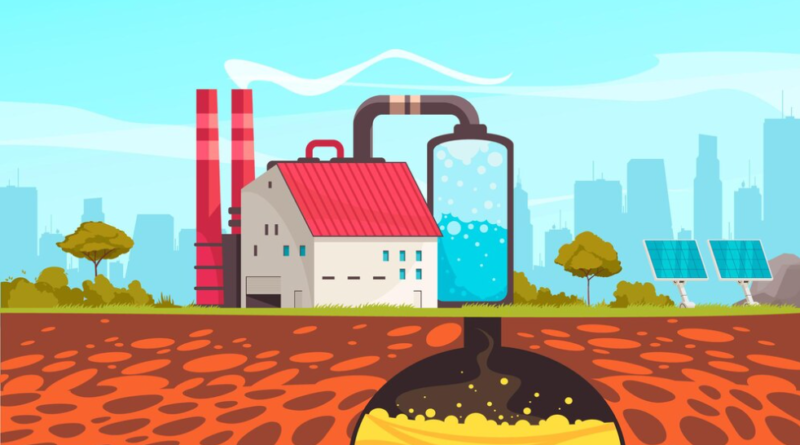How Does Geothermal Energy Work 2024
Introduction:
In the pursuit of sustainable and clean energy sources, geothermal energy stands out as a reliable and eco-friendly option. Derived from the Earth’s internal heat, geothermal energy has the potential to meet a significant portion of our energy needs while reducing our dependence on fossil fuels. In this comprehensive guide, we will delve into the intricacies of how geothermal energy works, exploring the science behind it, its applications, and the environmental benefits it offers.
Understanding the Earth’s Heat:
At the core of our planet lies an immense reservoir of heat, primarily generated by the decay of radioactive isotopes and leftover heat from the Earth’s formation. This heat continuously flows towards the Earth’s surface through conduction and convection, creating a vast potential for geothermal energy extraction.
Geothermal Reservoirs:
Geothermal reservoirs are areas beneath the Earth’s surface where high temperatures and pressure create a significant accumulation of heat. These reservoirs can be found in various forms, such as hot water and steam, in underground rock formations. The heat emanating from these reservoirs is a valuable resource that can be harnessed for electricity generation and direct heating applications.
Geothermal Power Plants:
The most common method of harnessing geothermal energy is through geothermal power plants. These plants are strategically located near geothermal reservoirs and use different technologies to convert the Earth’s heat into electricity. The two primary types of geothermal power plants are dry steam plants, flash steam plants, and binary cycle power plants.
Dry Steam Plants:
- In dry steam plants, high-pressure hot steam is extracted directly from the geothermal reservoir and used to turn turbines, which in turn drive generators to produce electricity. This direct use of steam makes dry steam plants one of the oldest and simplest forms of geothermal power generation.
- Flash steam plants are more common and operate by allowing high-pressure hot water from the geothermal reservoir to “flash” into steam as it rises to the surface. The steam is then used to turn turbines and generate electricity. The remaining water is usually reinjected into the reservoir to maintain sustainable energy extraction.
Binary Cycle Power Plants:
- Binary cycle power plants are ideal for lower-temperature geothermal reservoirs. In these plants, hot water from the reservoir is passed through a heat exchanger to transfer its heat to a secondary fluid with a lower boiling point, such as a hydrocarbon. The vaporised secondary fluid is then used to turn turbines and generate electricity.
Direct Geothermal Applications:
Beyond electricity generation, geothermal energy finds direct applications for heating and cooling. Geothermal heat pumps utilise the relatively constant temperature of the Earth just below the surface to efficiently heat buildings in winter and cool them in summer. This technology significantly reduces the need for traditional heating and cooling systems, resulting in energy savings and lower carbon emissions.
Environmental and Economic Benefits:
Geothermal energy boasts numerous environmental and economic benefits. It is a low-emission energy source, producing minimal greenhouse gases compared to fossil fuels. Geothermal power plants also have a small land footprint, making them suitable for both urban and remote locations. Furthermore, geothermal projects contribute to local economies by creating jobs and fostering energy independence.
Conclusion:
As we strive to transition to cleaner and more sustainable energy sources, geothermal energy emerges as a promising solution. Its inherent reliability, minimal environmental impact, and versatility in applications position it as a key player in our quest for a greener future. By understanding the science behind how geothermal energy works, we can fully appreciate its potential to reshape our energy landscape and contribute to a more sustainable world.
For More Articles visit : Home Page
FAQS :
Q. How does geothermal energy work step by step?
Ans. Geothermal energy works through a series of steps involving the Earth’s internal heat and the extraction of that heat to generate electricity or provide direct heating.
Q. How does geothermal work?
Ans. Geothermal energy works by tapping into the Earth’s internal heat to generate electricity or provide direct heating. This process involves locating and extracting heat from geothermal reservoirs and using it to power turbines connected to generators. The extracted heat can be in the form of hot water or steam, depending on the specific geothermal power plant technology used.
Q. What is geothermal energy explained simply?
Ans. Geothermal energy is a renewable energy source that harnesses the Earth’s internal heat for various purposes. This heat, generated by radioactive decay and residual energy from the Earth’s formation, is accessed from geothermal reservoirs. Power plants use the extracted hot water or steam to produce electricity by turning turbines.




